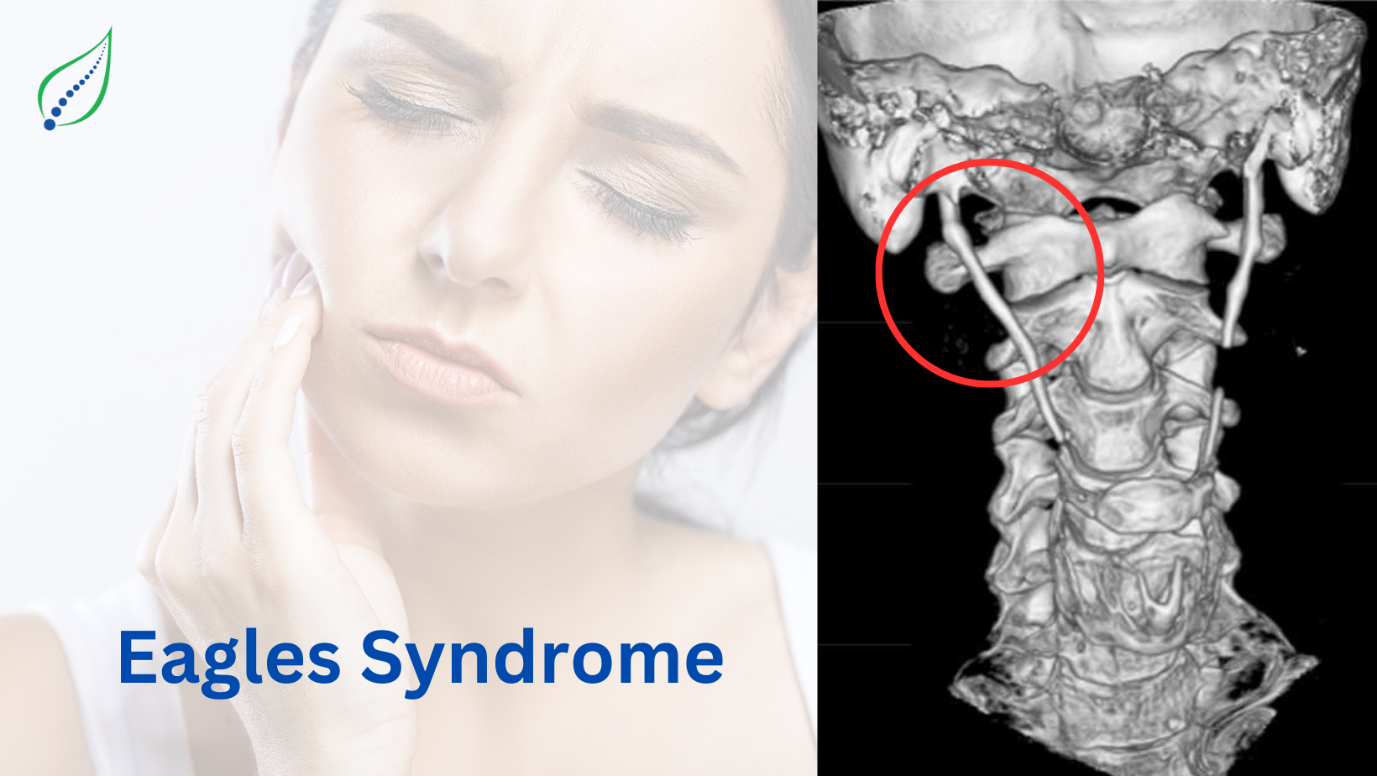Eagles Syndrome
Eagles syndrome is characterized by the recurrent pain in the oropharynx and the face due to the elongated styloid process or calcified stylohyoid ligament. It is the rare condition where pain is present in face or neck.
Eagle syndrome is a condition where there is elongation of the styloid process or thickening or calcification of the stylohyoid ligament. Actual styloid process is slender out growth at the base of the temporal bone, next posterior to mastoid apex. It lies caudally, medially and anteriorly toward maxilla-vertebro-pharyngeal recess. This recess contains carotid arteries, internal jugular vein, facial nerve, glossopharyngeal nerve, vagal nerve, and hypoglossal nerve. Eagle syndrome is described initially as “styalgia” by otorhinolaryngologist.
Based on history of stylohyoid pain syndrome and etiology they are classified into Acquired versus congenital. The Acquired is elongation of styloid process, the average length of the styloid process is 20-30 mm. Elongated styloid process is equal to 30 mm or more; whereas congenital variant is described as stylohyoid syndrome in which there will be pain along with symptoms of carotid compression (Presyncope, Syncope, and Trans ischemic events) occur due to ossified stylohyoid ligament. Some studies shows that accepted length of normal styloid process is 2.5 cm but greater than 3 cm or 4 cm is abnormal as it is highly associated with pain. The incidence of abnormal stylohyoid length range is 4% to 7.3% whereas the range of calcification of stylohyoid ligament is 22%-84%, but overall pain incidence with this abnormality is 4-10%. These stylohyoid abnormalities occur bilaterally but pain is felt unilateral side.
CAUSES:
Elongated or ossified stylohyoid complex leads to Compression of the neuro vascular structures around stylohyoid complex (The facial nerve, auriculo-temporal nerve, lingual nerve, chorda tympani, glossopharyngeal nerve and hypoglossal nerve are in close proximity to the stylohyoid complex)
SYMPTOMS:
- Recurrent throat and neck pain
- Radiating pain into ear
- Dysphagia
- Sharp shooting pain in the jaw, back of the throat, base of the tongue, ears, neck or face.
- Sensation of foreign object in throat after tonsillectomy
- Pain on chewing, swallowing, turning the neck, touching the back of the throat
- Ringing or buzzing in the ears.
- Pain in parietal/periorbital area, visual disturbance, syncope
- Elongated styloid process is known risk factor for carotid artery dissection and carotid stent fracture
- Tinnitus and ear popping.
DIAGNOSIS:
- Physical examination: Pharyngeal palpation -tonsil or within the tonsillar fossa can be diagnostic
- Plain radiographs of the skull: lateral view help in visualization of an elongated styloid; panoramic radiographs are also effective in diagnosing eagle syndrome.
- CT scan shows the relationship between the bony styloid and adjacent neuro-vascular structures.
TREATMENT:
- Firstline treatment: Non steroidal anti-inflammatory drugs to manage the pain.
- Multi-drug approach with gabapentin, tianeptine, tramadol and acetaminophen.
- Stellate ganglion block can be added weekly to the drug regimen which can result in complete reduction of symptoms.
- Some studies show that utilizing a dual therapy with pregabalin and anticonvulsants, local injection of anesthetic and dexamethasone prove effective conservative option.

_1746449195_1751827240.png)


